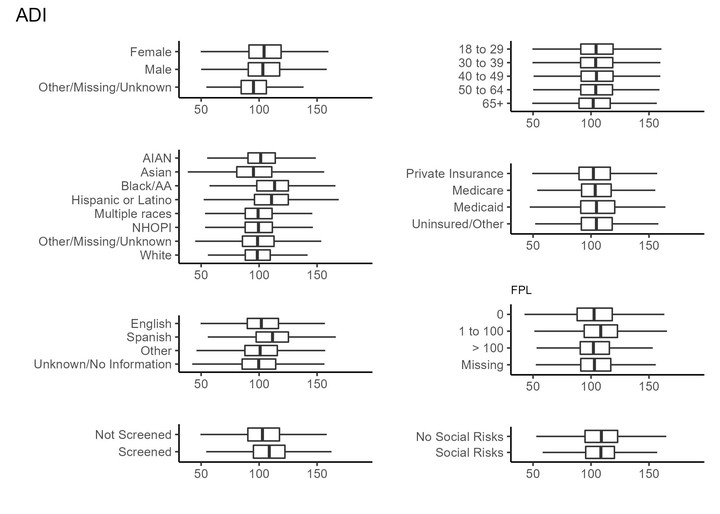Area-Level Social Determinants of Health and Individual-Level Social Risks: Assessing Predictive Ability and Biases in Social Risk Screening

Abstract
Introduction. Area-level social determinants of health (SDoH) and individual-level social risks are different, yet area-level measures are frequently used as proxies for individual-level social risks. This study assessed whether demographic factors were associated with patients being screened for individual-level social risks, the percentage who screened positive for social risks, and the association between area-level social determinants of health (SDoH) and patient-reported social risks in a nationwide network of community-based health centers. Methods. Electronic health record data from 1,330,201 patients with health center visits in 2021 were analyzed using multilevel logistic regression. Associations between patient characteristics, screening receipt, and screening positive for social risks (e.g., food insecurity, housing instability, transportation insecurity) were assessed. The predictive ability of three commonly used SDoH measures (Area Deprivation Index, Social Deprivation Index, Material Community Deprivation Index) in identifying individual-level social risks was also evaluated. Results. Of 244,155 (18%) patients screened for social risks, 61,414 (25.2%) screened positive. Sex, race/ethnicity, language preference, and payer were associated with both social risk screening and positivity. Significant health system-level variation in both screening and positivity was observed, with an intraclass correlation coefficient of 0.55 for social risk screening and 0.38 for positivity. The three area-level SDoH measures had low accuracy, sensitivity, and area under the curve when used to predict individual social needs. Conclusion. Area-level SDoH measures may provide valuable information about the communities where patients live. However, policymakers, healthcare administrators, and researchers should exercise caution when using area-level adverse SDoH measures to identify individual-level social risks.